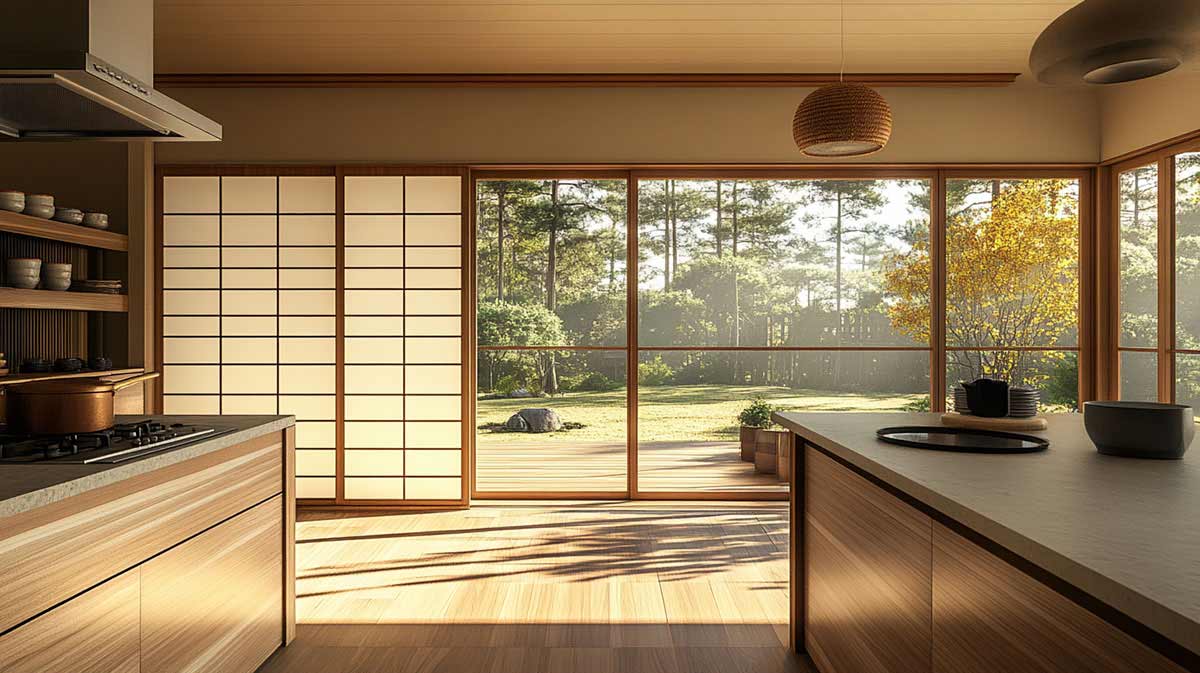Introduction
The dining room is more than just a place to eat — it’s where memories are made, celebrations happen, and everyday connections grow. Designing the perfect dining room balances style, comfort, and functionality, making it a central feature of any home. Whether you have a spacious formal room or a cozy nook, the right design choices can transform your dining experience.
Understanding the Importance of Dining Room Design
A well-designed dining room sets the tone for every meal and gathering. It influences mood, conversation flow, and even appetite. The right environment invites relaxation and warmth, encouraging long, meaningful meals with friends and family.
Key Elements to Consider
-
Layout:
Plan your dining room layout to allow easy movement around the table, access to seating, and convenient flow to the kitchen or living areas. Avoid overcrowding or tight spaces that can hinder interaction. -
Furniture:
The dining table and chairs form the heart of the room. Select sizes and shapes that fit your space and lifestyle. Rectangular tables suit larger rooms, while round or oval tables maximize space in smaller areas. -
Lighting:
Layer your lighting to include overhead fixtures, task lighting, and ambient sources. Dimmers help adjust mood from casual breakfasts to elegant dinners. -
Color:
Colors influence perception and atmosphere. Warm tones promote appetite and comfort, while cool shades can create a modern, calming vibe.
Choosing the Right Dining Table and Chairs
-
Table Shapes:
-
Rectangular — classic, fits larger groups.
-
Round — encourages conversation, great for small spaces.
-
Oval — softer edges, elegant and versatile.
-
Square — ideal for compact rooms.
-
-
Material Choices:
-
Wood — timeless, durable, available in many finishes.
-
Glass — modern, visually lightens the room.
-
Metal — industrial look, very sturdy.
-
-
Chair Styles:
Match chairs to table style and room ambiance. Consider comfort with padded seats, ergonomic backs, and durable upholstery or finishes.
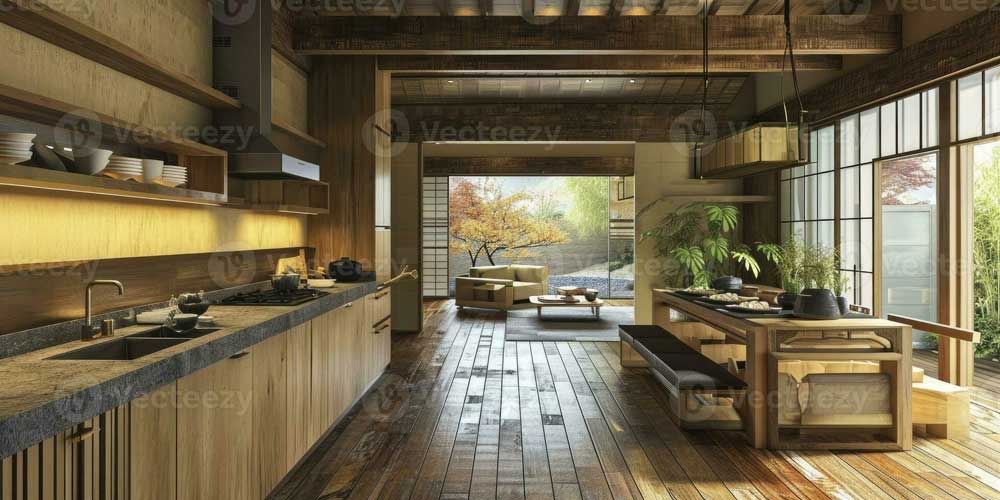
ai-generated-japanese-style-kitchen-interior-photo-(2)
Optimizing Space for Comfort and Flow
Ensure at least 36 inches of clearance around the table for easy movement. Avoid placing furniture too close to doors or windows to maintain natural light and traffic flow. Use rugs proportionally — large enough to fit chairs when pulled out.
Popular Styles and Themes
-
Modern: Clean lines, neutral palettes, minimal clutter.
-
Traditional: Ornate furniture, rich colors, classic materials.
-
Rustic: Natural woods, earthy tones, cozy textures.
-
Minimalist: Simple shapes, monochromatic schemes, functional decor.
Color Palettes and Textures
-
Warm neutrals like beige, taupe, and cream provide a soft backdrop.
-
Deep blues and greens add sophistication.
-
Metallic accents (gold, brass, copper) create luxe highlights.
-
Incorporate texture through textiles like linen curtains, velvet cushions, and woven rugs.
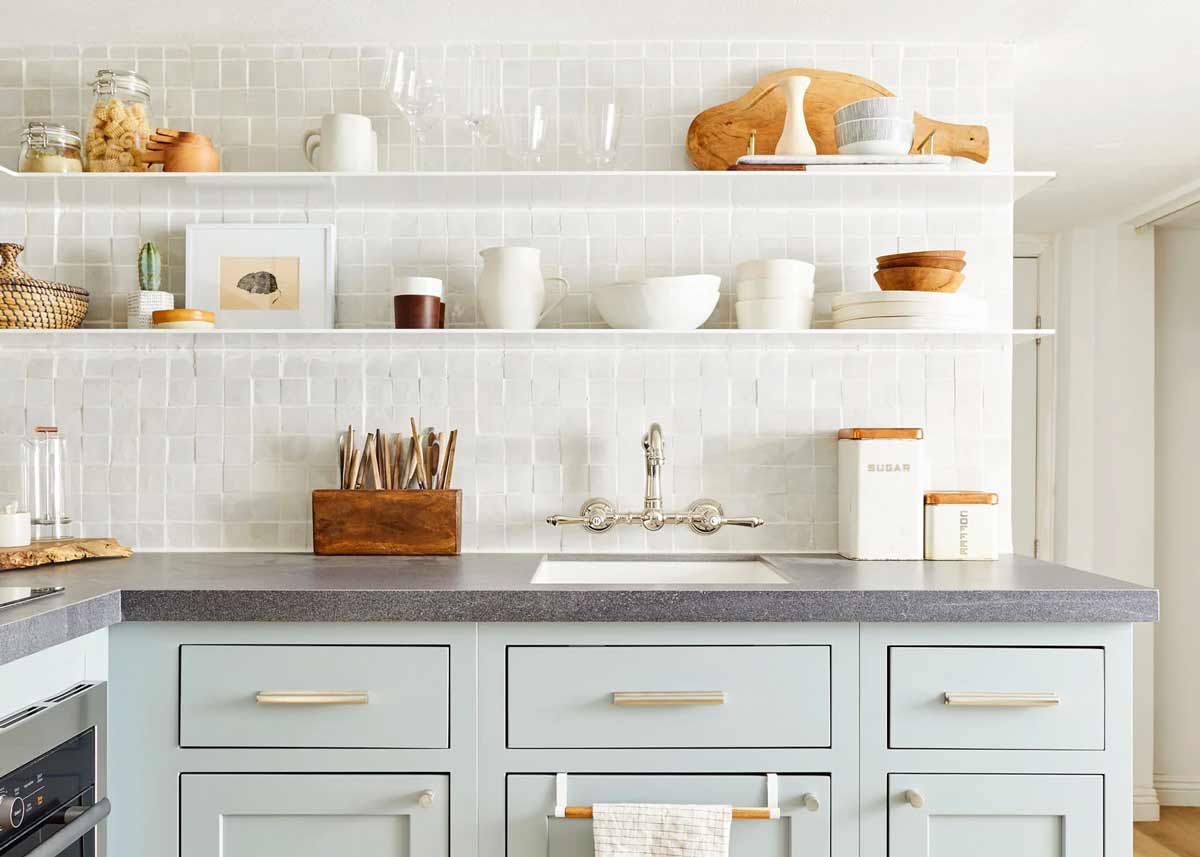
2025 Kitchen Design Essentials
Enhancing Ambiance, Style, and Functionality
Lighting Solutions: Setting the Perfect Mood
Lighting is a cornerstone of great dining room design. It affects the ambiance, functionality, and overall aesthetic. A well-thought-out lighting plan balances natural light and artificial sources to create a welcoming and adaptable atmosphere.
-
Natural Light:
Maximize natural light by using sheer curtains or blinds that allow sunlight to filter softly. Position the dining table near windows when possible to take advantage of daylight. -
Overhead Lighting:
Pendant lights or chandeliers centered above the table provide focused illumination. Choose fixtures that complement your dining room style — from sleek modern pendants to classic crystal chandeliers. -
Task Lighting:
Adjustable wall sconces or recessed lighting can highlight serving areas or artwork. Dimmable switches let you control intensity to match different occasions. -
Ambient Lighting:
Incorporate floor lamps, table lamps, or LED strip lights for softer, indirect lighting that adds warmth and depth.
Flooring Options: Durable and Stylish Choices
The flooring in your dining room needs to be both functional and attractive. Consider traffic patterns, maintenance, and how it complements your overall design.
-
Hardwood:
Timeless and elegant, hardwood floors add warmth and value. Opt for durable finishes resistant to spills and scratches. -
Laminate:
A budget-friendly alternative that mimics wood or stone. Easy to clean and maintain, ideal for busy households. -
Tile:
Porcelain or ceramic tiles offer durability and a wide range of design options. They are especially useful in open-plan kitchens and dining areas. -
Rugs:
Area rugs can anchor your dining space, add texture, and absorb sound. Choose rugs that are stain-resistant and large enough to accommodate chairs when pulled out.
Wall Decor, Art, and Accessories: Adding Personality
Walls are your canvas for personal expression and style.
-
Paint and Wallpaper:
Choose colors or patterns that complement your furniture and lighting. Accent walls with bold hues or textured wallpaper can add focal interest. -
Artwork:
Select pieces that reflect your taste and inspire conversation. Gallery walls with varied frame sizes add visual intrigue. -
Mirrors:
Strategically placed mirrors can expand visual space and reflect light, making the dining room feel brighter and larger. -
Shelving and Display:
Floating shelves or built-in cabinets allow you to showcase china, glassware, or collectibles while keeping clutter controlled.
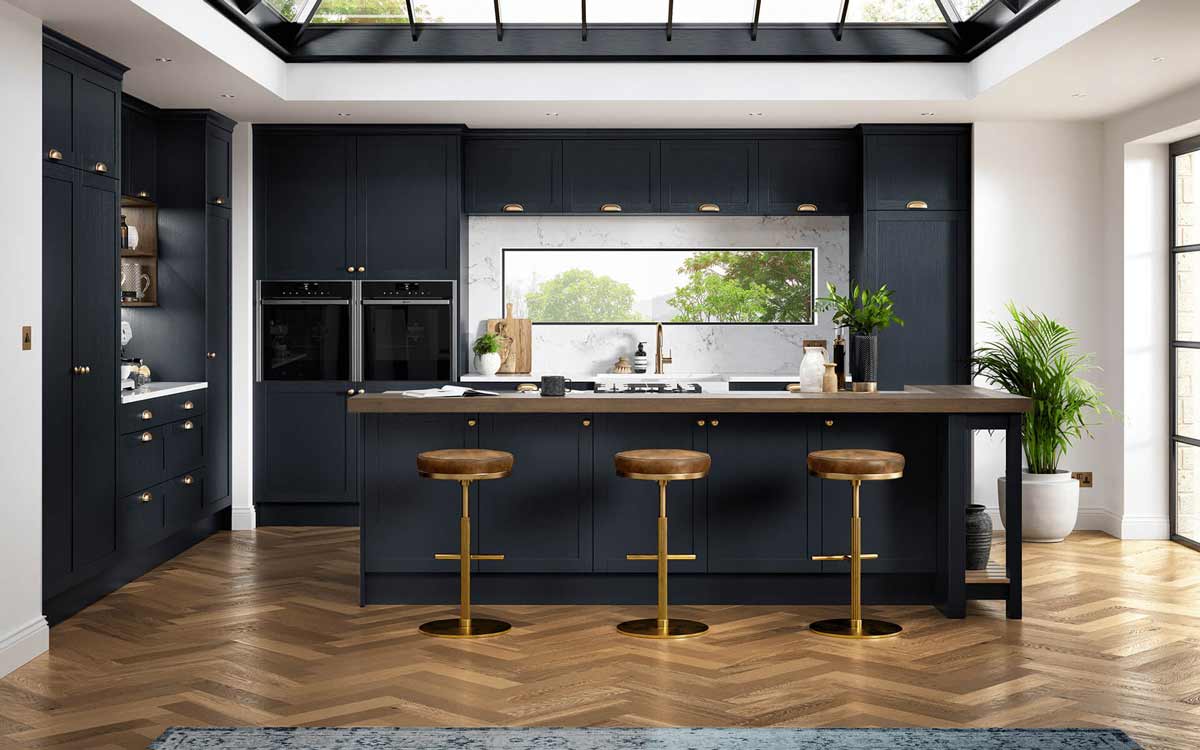
Kitchen Design Simple: A Modern Guide to Simplicity and Functionality in 2025
Smart Technology in Dining Rooms
Modern dining rooms can benefit from smart home technology that enhances convenience and ambiance.
-
Smart Lighting Controls:
Use apps or voice commands to adjust lighting color and intensity for different moods and times of day. -
Climate Control:
Smart thermostats ensure comfortable temperatures during meals, especially in open-plan homes. -
Sound Systems:
Integrate discreet speakers for background music, controlled remotely for seamless entertaining. -
Smart Table Accessories:
Innovations like built-in wireless charging pads or LED centerpieces add tech-savvy flair.
Multifunctional Dining Spaces
Many homeowners use dining rooms for more than just meals.
-
Work and Study:
Design seating and tables that double as workspaces with easy access to power outlets and good lighting. -
Entertaining Zones:
Incorporate sideboards or bars for serving drinks and snacks during gatherings. -
Kid-Friendly Areas:
Choose durable, easy-to-clean materials and provide extra seating or activity zones.
Sustainability and Eco-Friendly Materials
Eco-conscious design is increasingly important.
-
Sustainable Woods:
Look for FSC-certified hardwoods or reclaimed wood furniture to reduce environmental impact. -
Non-Toxic Finishes:
Choose paints and varnishes with low VOCs (volatile organic compounds). -
Recycled and Upcycled Decor:
Vintage accessories and repurposed items add unique charm while being planet-friendly. -
Energy-Efficient Fixtures:
LED lighting and energy-saving appliances reduce power consumption.
Enhancing your dining room with the right lighting, flooring, decor, smart tech, multifunctional use, and sustainability choices creates a space that is not only beautiful but also versatile and forward-thinking. These elements work together to support comfort, style, and modern lifestyle needs.

young-slim-beautiful-woman-sitting-on-kitchen-table-holding-knife-sexy-black-underwear-housewife-sensual-dinning-room-household-appliances-skinny-body-tanned-skin-photo
Trends, Budgeting, Planning & FAQs
Latest Trends in Dining Room Design
Stay ahead of the curve with these current dining room design trends for 2025:
-
Biophilic Design:
Bringing nature indoors through plants, natural materials, and earthy tones to enhance wellbeing. -
Mixed Materials:
Combining metals, wood, glass, and stone for a textured, layered look. -
Maximalism:
Bold patterns, rich colors, and eclectic accessories that express personality. -
Sustainable Style:
Increasing use of recycled and ethically sourced materials. -
Smart and Connected:
Integration of IoT devices for lighting, temperature, and entertainment. -
Curved Furniture:
Softer, rounded edges on tables and chairs for a cozy feel.
Budgeting Your Dining Room Design
Creating your ideal dining room can fit a variety of budgets. Here’s a rough cost breakdown for different elements:
| Item | Budget Range (USD) | Notes |
|---|---|---|
| Dining Table | $300 – $5,000+ | Materials and size vary widely |
| Dining Chairs (set of 4-6) | $200 – $2,500+ | Upholstered vs. wood, designer brands |
| Lighting Fixtures | $100 – $1,200+ | Pendant, chandelier, smart lighting |
| Flooring | $500 – $4,000+ | Hardwood, tile, laminate options |
| Paint / Wallpaper | $50 – $500 | Depending on quality and brand |
| Decor & Accessories | $100 – $1,000+ | Art, rugs, mirrors, shelving |
| Smart Devices | $150 – $1,500+ | Lighting controls, speakers, thermostat |
Tips to Save:
-
Mix budget and splurge pieces.
-
Opt for quality basics and update accessories seasonally.
-
Consider DIY for painting or minor decor changes.
-
Shop sales or second-hand for unique finds.
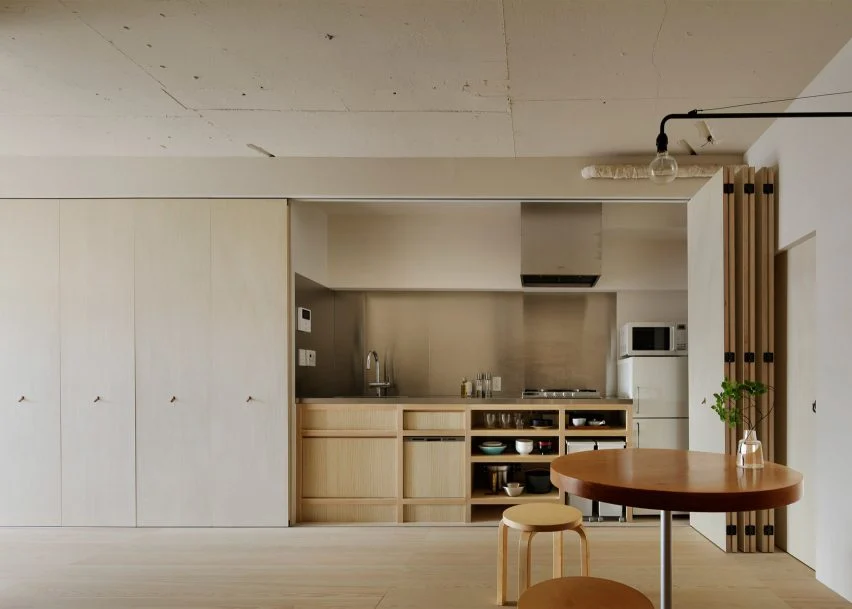
apartment-in-kitasando-minorpoet-interior-tokyo-japan_dezeen
Dining Room Design Planning Checklist
To keep your project organized, follow this checklist:
-
Measure Your Space:
Note dimensions, doorways, windows, and architectural features. -
Define Purpose:
Formal dining, casual family meals, multipurpose space? -
Choose a Style:
Modern, rustic, traditional, eclectic? -
Select Key Furniture:
Table size and shape, chairs, storage. -
Plan Lighting:
Ambient, task, accent lighting. -
Choose Flooring & Walls:
Durable floors, wall colors, or coverings. -
Add Accessories:
Rugs, artwork, plants, curtains. -
Integrate Smart Tech:
Lighting controls, climate, sound. -
Set a Budget:
Allocate funds per category. -
Schedule Installation:
Coordinate deliveries and any professional help.
Case Study: Transforming a Small Dining Room
-
Before:
A cramped 10×10 foot space with outdated furniture, poor lighting, and no storage. -
Process:
Replaced bulky furniture with a round extendable table. Added a built-in bench with storage. Installed a dimmable chandelier and layered lighting. Used light-colored paint and a large mirror to open the space visually. Incorporated plants and textured rug for warmth. -
After:
The space now comfortably seats six, feels bright and airy, and has ample storage for dining essentials. The multifunctional bench doubles as a reading nook.
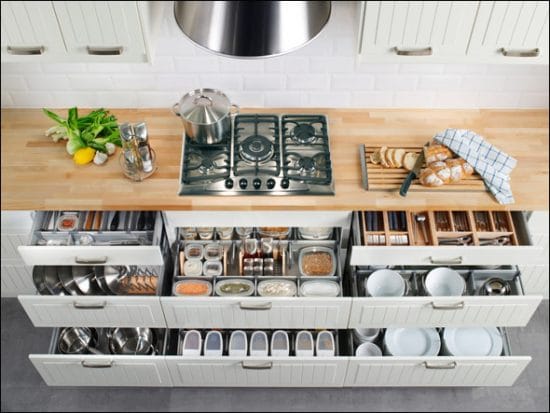
High-Performance Kitchen Tools That Are Worth Every Penny
Frequently Asked Questions (FAQ)
Which dining table shape is best for small spaces?
Round or oval tables are ideal as they allow better flow and more seating flexibility.
Where should the dining table be positioned?
Center it under the main light source and near natural light if possible. Ensure enough clearance for chairs and movement.
Who should I hire for a dining room redesign?
Interior designers for a full renovation; decorators or consultants for styling and furniture selection.
When is the best time to renovate a dining room?
During off-peak home improvement seasons (late winter or early spring) to save costs and ensure availability.
How can I make my dining room more eco-friendly?
Use sustainable materials, energy-efficient lighting, and purchase from responsible brands.
What are the must-have smart devices for dining rooms?
Smart lighting systems, climate controls, and wireless sound systems.
Final Takeaways
A well-designed dining room balances functionality, style, and comfort. Whether you’re hosting formal dinners or casual family meals, your space should reflect your lifestyle and taste. By incorporating current trends, budgeting wisely, planning thoroughly, and embracing smart technology, you can create a dining room that’s both inviting and practical.

50+ Essential Kitchen Tools and How to Use Them Like a Pro
Dining Room Design: Bonus — Extra Tips, Tables & Examples
Bonus Tips for a Stylish and Functional Dining Room
-
Create a Focal Point:
Use a striking chandelier, large artwork, or a unique table centerpiece to anchor the room. -
Mix Seating Styles:
Blend chairs with a bench or stools to add interest and versatility. -
Layer Lighting:
Combine ambient ceiling lights with sconces, lamps, or candles for atmosphere. -
Use Rugs Wisely:
Choose a rug large enough so chairs remain on it when pulled out. -
Keep Traffic Flow Clear:
Allow at least 36 inches clearance around the table for movement. -
Personalize Your Space:
Display heirlooms, collections, or travel souvenirs. -
Add Greenery:
Plants or floral arrangements breathe life into the room and soften hard edges.
Detailed Cost Comparison Table
| Item | Low Budget ($) | Mid Budget ($) | High Budget ($) | Notes |
|---|---|---|---|---|
| Dining Table | 300 | 1,200 | 5,000+ | Material and brand influence costs |
| Dining Chairs (Set) | 200 | 900 | 3,000+ | Upholstered vs designer or custom |
| Lighting Fixture | 100 | 400 | 1,200+ | Smart vs decorative |
| Flooring (per sq ft) | 3 | 7 | 15+ | Laminate vs hardwood or natural stone |
| Wall Treatments | 50 | 200 | 500+ | Paint, wallpaper, or textured finishes |
| Accessories & Decor | 100 | 500 | 1,000+ | Rugs, art, mirrors, plants |
| Smart Devices | 150 | 700 | 1,500+ | Lighting control, speakers, thermostats |
Example Dining Room Layout for a Medium-Sized Space (12×14 ft)
| Zone | Size (ft) | Recommended Furniture & Features |
|---|---|---|
| Seating Area | 8 x 8 | Rectangular table for 6-8, mix of chairs + bench |
| Buffet/Storage | 4 x 3 | Sideboard or built-in cabinetry for dishes |
| Lighting | N/A | Central chandelier + wall sconces for mood |
| Traffic Clearance | 3 feet | Around table for easy movement |
| Accent Area | 2 x 3 | Small reading nook or plant stand |
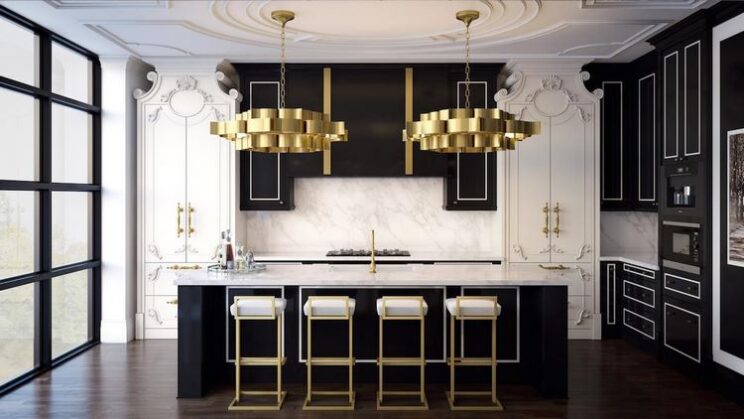
Kitchen Appliances in 2025: A Smart Guide to Modern Cooking Technology
Additional Information: Choosing Materials
| Material | Pros | Cons | Best For |
|---|---|---|---|
| Solid Wood | Durable, timeless, natural warmth | Expensive, needs maintenance | Classic/traditional look |
| Glass | Light-reflective, modern aesthetic | Fragile, fingerprints show | Contemporary spaces |
| Metal | Sleek, industrial feel, durable | Can be cold to touch | Modern/industrial design |
| Marble | Luxurious, heat resistant | Heavy, expensive | Elegant dining rooms |
| Laminate | Affordable, easy to clean | Less durable, looks synthetic | Budget-friendly |
What to Do When Designing a Dining Room
-
Assess Your Needs:
How many people do you usually seat? Do you entertain often? -
Consider Lifestyle:
Kids, pets, and cooking styles affect material and layout choices. -
Test Furniture Comfort:
Visit showrooms to try chairs and tables. -
Plan Storage:
Keep dining essentials handy but out of sight. -
Seek Professional Help if Needed:
Interior designers can help maximize your space and style.


